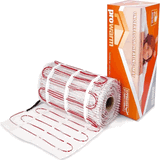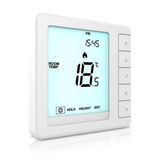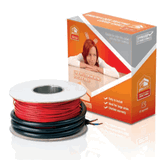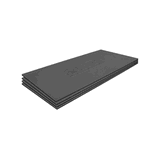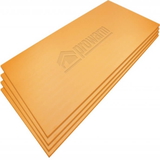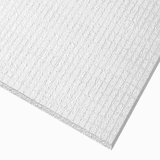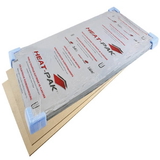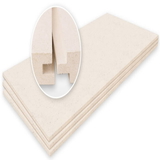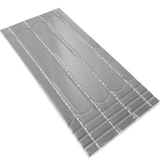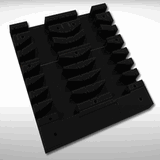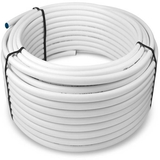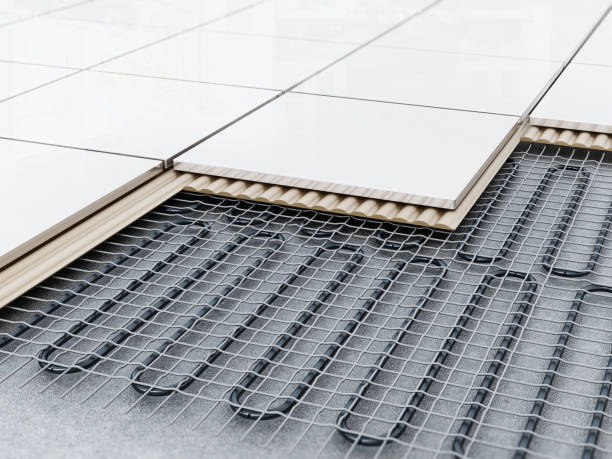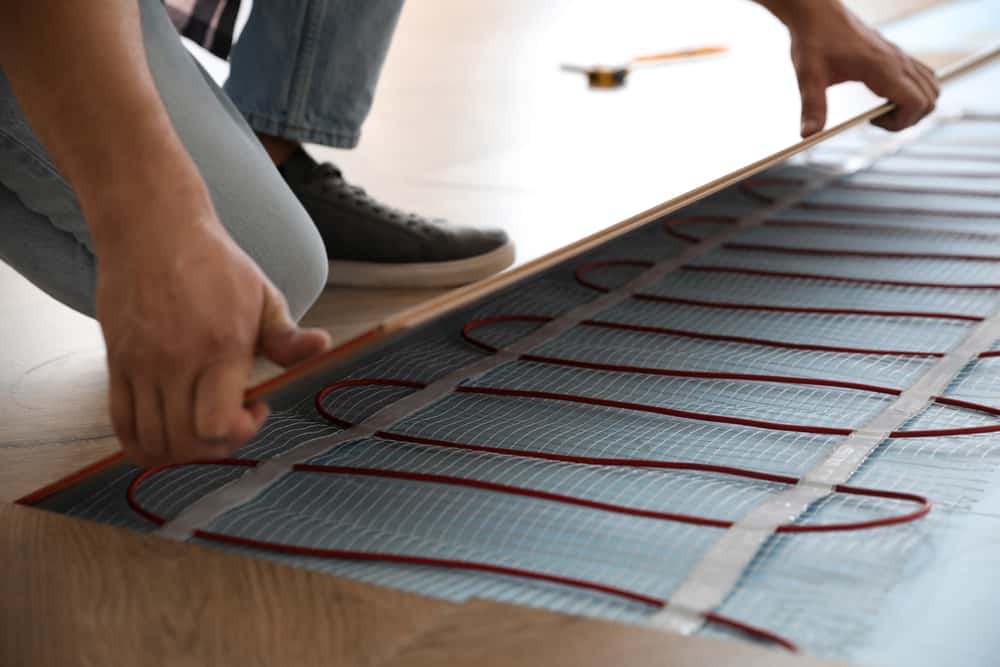- Blogs
- A Brief Guide to Underfloor Heating
A Brief Guide to Underfloor Heating

A warm and comfortable home helps you relax after a tiring day at work. Insulation definitely plays a critical role in keeping your home cosy and warm. We use different types of insulation like PIR, insulation batts like Rockwool RWA45, Rocksilk RS45, loft insulation rolls, plasterboards, pipe lagging and others to keep the heat in. But have you ever considered using underfloor heating?
A network of pipes or wires beneath your floor that helps keep your home warm is underfloor heating, in very simple terms. What was once considered to be a luxurious underfloor insulation option is now an affordable and sustainable option.
As more people are turning towards underfloor heating, we at Buy Insulation Online have brought you some trade-quality underfloor insulation boards, insulated underlays and supplies at low cost that can help you save both money and energy.
With underfloor heating, you can reduce your energy bills and insulate your home more cleanly and smartly. But how? Let's find out.
What Is Underfloor Heating?![underfloor Heating]()
As mentioned earlier, in the simplest of terms, underfloor heating is a network of pipes or wires that keeps your floor and home warm. With underfloor heating, you can walk barefoot indoors, even when it is freezing outside. They are of two different types but will be discussing that a bit later in the article.
What Are The Benefits Of Underfloor Heating?
Some of the major benefits of underfloor heating include:
Underfloor Heating Evenly Heats The Room:
With underfloor heating, warm air rises from the floor to the ceiling. As a result, heat is felt across the entire space, no matter how big the area is. There will be lesser cold spots in your home. You will enjoy an even, comforting temperature in every corner of your house.
The best part about underfloor heating is that it does not waste energy warming the air around, instead, it warms 'bodies'. As in, underfloor heating keeps you warm and comfortable and not the air around you.
Saves Energy And Money:
Underfloor heating be it electric underfloor heating or wet underfloor heating only needs to be heated to about 29 degrees Celsius, to achieve a comfortable indoor temperature. Much unlike the radiators, or other heating systems, which will have to be heated to a much higher temperature to give the same effect. This translates to low energy bills and a more energy-efficient home.
Easy To Maintain, Install And Use:
Installing electric underfloor heating is a DIY job, but only if you are an efficient DIYer. However, you will need to contact a certified electrician to check and approve the final connections.
Once installed, underfloor heating requires very little maintenance. Plus, most of the systems today have lifetime warranties.
Better Temperature Control:
Underfloor heating gives you better control of indoor temperature. You can control it using a smart thermostat that is a part of almost every underfloor heating system. Most thermostat manufacturers offer apps that let you control the temperature from anywhere, anytime. So no need to worry if you forget to turn off your underfloor heating system when on a holiday.
Saves space:
Since underfloor heating is under your floor, it does not take up space in your living room, unlike the ugly-looking radiators. Thermostats may be visible, but with many chic-looking thermostats available today, you will want to show them off.
Compatible With All Floor Types:
Underfloor heating both wet and electric underfloor heating is compatible with all floor types. No matter what leading underfloor insulation brand you go with, rest assured, it is compatible with whatever floor type you have - cement, stone, laminate, wood or tile.
Cleaner Energy:
You can choose solar energy panels to power your electric underfloor heating and wet underfloor heating systems. This way, you decrease your dependency on limited resources, increase your EPC ratings and make your home more energy efficient.
What Are The Different Types Of Underfloor Heating?
Underfloor heating is classified into two different types:
Underfloor Heating Water Or Wet Underfloor Heating:
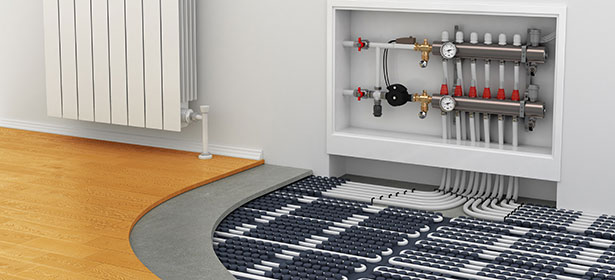 In wet underfloor heating, warm water circulates in reinforced polyethene piping within the floor. Water is heated by a boiler or a heat pump, which can run on solar panels, biomass or other sustainable energy solutions. A top-quality thermostat is used to control and adjust the temperature of water pipes.
In wet underfloor heating, warm water circulates in reinforced polyethene piping within the floor. Water is heated by a boiler or a heat pump, which can run on solar panels, biomass or other sustainable energy solutions. A top-quality thermostat is used to control and adjust the temperature of water pipes.
Wet underfloor heating can reduce your energy bill by up to 15 per cent. Heat is evenly distributed throughout the room, no matter how larger the area is. Plus, it doesn't compromise on comfort!
Wet underfloor heating systems better maintain the required indoor temperature compared to underfloor heating electric. They are also better suited for new builds or buildings that have larger floor space.
Underfloor Heating Electric:
It is often referred to as the ‘dry’ method of underfloor heating. Installing electric underfloor heating means having a network of wires or cables underneath your floor.
Electric underfloor heating is well suited for refurbishment projects and small places like a bathroom etc. These heat up fast, but they don't hold heat as long as a water system would.
Underfloor Heating Or Radiators, Which Is Better?
Between the exponential surge in gas prices, no thanks to the ongoing war and the UK’s goal to achieve carbon neutrality by 2050, there is no relief in sight from the soaring energy bills. More people are hence turning towards sustainable energy options to reduce energy bills and keep their homes cosy.
Underfloor heating is definitely a sustainable and cleaner way to keep your home warm, plus it is nearly 25% more effective than radiators.
Radiators consume more energy and need to be heated to a higher temperature to maintain a comfortable indoor temperature. While underfloor heating functions at lower temperatures to create the same effect.
Meaning with underfloor heating, your house consumes less energy, which results in a significant decrease in energy bills. Since underfloor heating attracts lower energy bills over time, the initial expense of installing underfloor heating is recouped within a couple of years.
Underfloor heating delivers greater comfort levels compared to radiators. Radiators work their way down from the top, as in, they radiate warm air by the process of convection, where the ceiling is at a greater temperature compared to the floor where people dwell. This is not ideal, really.
It takes more time for the radiators to kick in. Radiators need to produce more warm air for it to reach the floor. More energy equates to higher bills, not something you will face with an underfloor heating system in place.
Also, with a radiator, you will lose warm air to ventilation plus, there are more cold spots as warm air is often unevenly distributed. Radiators do not filter out dust particles. Warm air circulation promotes dust movement, which can worsen breathing issues for elderly and allergy patients.
Also, conventional heating lowers humidity in space, which makes the air uncomfortable and dry. Underfloor heating creates radiant heat that makes you feel warm, as opposed to radiators which only heat the air around them. It is like walking on a warm blanket.
How Does Underfloor Heating Work?
As we have discussed above, Underfloor heating be it wet underfloor heating or electric underfloor heating, is installed below the surface of the floor.
With underfloor heating, the heat produced by the warm water or current passing through the network underneath your floor moves upwards, warming your floor and you. Since it works its way up, underfloor heating requires less energy to keep the conditioned air at the ground level warm where it should be. As experts say even an insignificant decrease of 1°C, will help decrease your energy bills by 10% or so.
Is underfloor Heating safe?![underfloor insulation]()
Water conducts electricity well. So naturally, the common concern among new users of underfloor heating is the safety factor. Most of the top brands offer underfloor heating components that have been rigorously tested for safety. They are compliant with the best and standard practices and laws in the UK.
Can You Get Electric Shocks From Underfloor Heating?
The concept of electricity being used under the very floor you walk on can be quite scary. But rest assured the cables or wires that the top brands like Prowarm or WarmUp use are severely tested and approved by the top regulatory authorities in the UK.
Underfloor heating kits and boards are completely safe to use. Right from their manufacture to testing everything is done under the strictest standards. The cables used for electric underfloor heating are made in such a way that they direct any leaks away from the floor finish and the end user, i.e., you.
In addition to satisfying the highest safety standards, underfloor heating cables made by some of the leading brands are BEAB approved and quick and simple to install.
Does Underfloor Heating Really Improve Air Quality?
The radiant heat produced by underfloor heating warms people inside the room. The heat that is radiated from the floor improves air quality in a space as well as comfort levels.
It does not circulate warm air through the room like radiators or other conventional heating methods. Since air is not circulated dust particles are not disturbed.
So underfloor heating simply emits radiant heat whilst keeping the air fresh and free of allergens or dust.
Does insulation help maximize Underfloor Heating?
As we have repeatedly mentioned here at Buy Insulation Online, insulation not only helps save energy expenditures but also makes your home energy efficient whilst taking Britain one step closer to its carbon neutrality goal.
Underfloor heating complements insulation well. When your home has adequate insulation that is installed properly, the efficiency of underfloor heating will increase. While underfloor heating emits radiant heat through the floor, wall insulation, loft and roof insulation ensure that this heat does not escape.
If you have installed underfloor heating and yet are not seeing a decrease in your energy bills, the reason could be insufficient or improperly installed insulation. This might be the time to look out for insulation batts like RWA45, RS45, or insulation boards like PIR foam boards or polystyrene insulation that could help improve your home's energy efficiency.
What Is The Cost Of Underfloor Insulation?
The cost of underfloor insulation depends on the size of your floor, the age of your building and also the type of underfloor heating system your choose - electric or wet underfloor heating.
For a refurbishing project, the cost of electric underfloor heating can be anything between £4,000-4,500, while the expenses for installing underfloor heating for a new build can add up to around £3000, including the labour and material costs.
Underfloor heating does sound pricey, no doubt, but it is definitely a worthy investment. Electric underfloor heating will pay for itself many times over within a couple of years as you can see a significant reduction in your energy costs.
Which Is The Best Flooring For Underfloor Heating?
Underfloor heating is compatible with all floor types: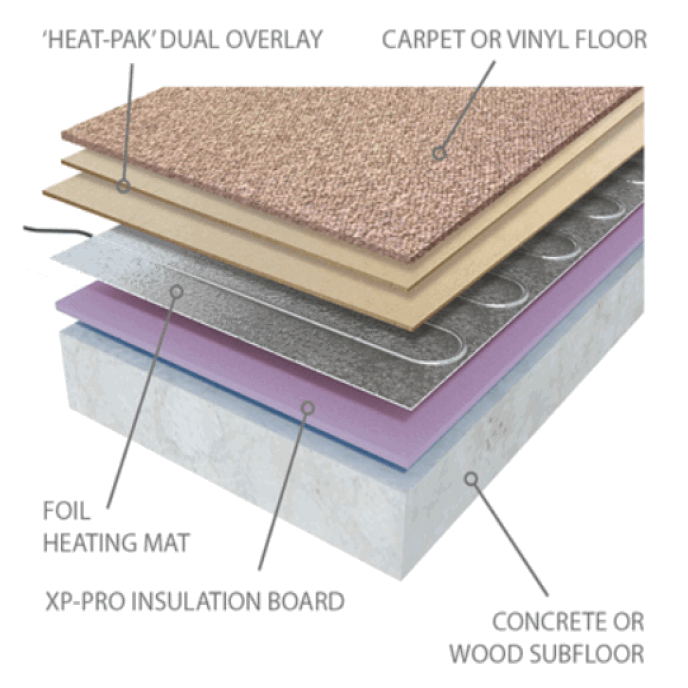
Polished screed, tile and stone flooring - No matter what type of underfloor heating you choose, tile or stone flooring works perfectly with underfloor heating, thanks to their excellent thermal properties. Both stone and tile, quickly transmit heat from an underfloor heating pipe or wire to the surface of the floor. Tile and stone flooring retains heat efficiently as well.
Engineered and Wood Flooring - Wooden floorings are also compatible with underfloor heating. However, their viability varies according to their thermal qualities. The better the floorboards are at carrying or conducting heat, the better suited they will be for underfloor heating.
The ideal type of wood flooring to use with an underfloor heating system is engineered timber since it adapts well to fluctuations in floor temperature.
Underfloor heating is also compatible with vinyl floor, rubber floor, linoleum flooring and carpet & rug flooring.
Why Use Underfloor Insulation Boards With Underfloor Heating?
By using underfloor insulation boards both below underfloor heating, you ensure that heat generated moves upwards where you want it to be. It takes less time and energy for an underfloor heating system to reach the required temperature, plus the temperature is maintained for a longer time. A win-win situation really!
Underfloor insulation boards are available in thicknesses of as less as 6mm, hence they do not elevate your floors much. You can use tile backer boards or extruded polystyrene boards along with underfloor heating.
In Conclusion:
Underfloor heating is definitely not cheap. It is pricey when compared to other insulation materials like PIR, XPS boards, and wool insulation. But with the ever-increasing energy bills and the rush to look out for more sustainable solutions, underfloor heating is definitely something worth considering. It is a worthy investment as it will pay for itself many times over, within only a couple of years.
For top-quality underfloor insulation boards, underfloor heating supplies, XPS insulation, insulated underlays, and much more, visit Buy Insulation Online. We are also leading online insulation suppliers for loft insulation, fiberglass insulation rolls, acoustic insulation batts, pipe lagging, ductwrap, and much more. Plant a tree for free and also protect 5 trees on amazon, with every order.

Samuel Hitch
Managing Director
Buy Insulation Online.
Leave A Reply
Your feedback is greatly appreciated, please comment on our content below. Your email address will not be published. Required fields are marked *
